Cold Candied Oranges
- March 22, 2020
- 5 / 5
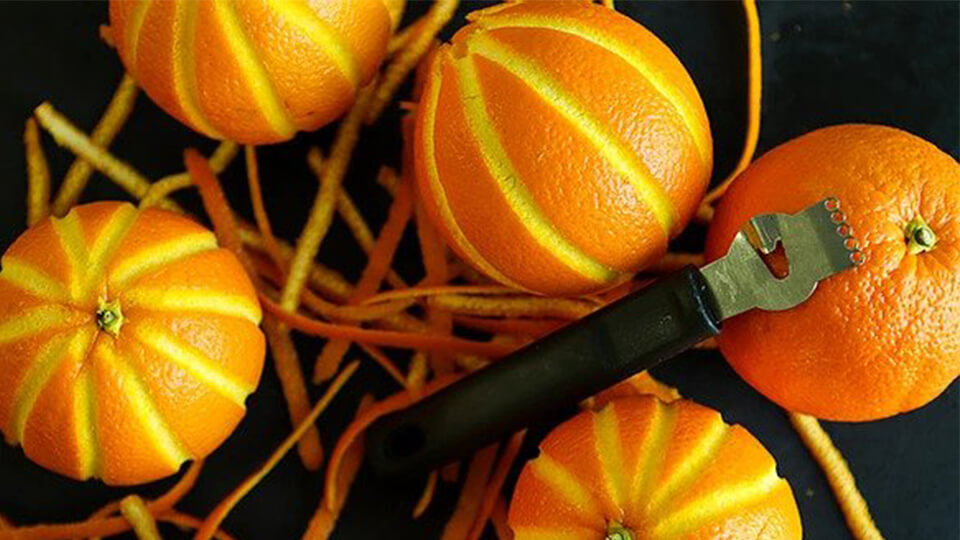
My father, of blessed memory, had peculiar culinary tastes. He was quite a gourmand, especially in his day. We never knew if we were going to be served his paella or shrimp (both of which were pretty unusual back in the day). His concoctions were always delicious, but one thing I could never understand was his love for candied orange peels. As I child, I couldn’t say “ewwwww” fast enough! Why someone would want to mix a bitter orange peel with a candied coating was beyond me. But, when I saw this recipe from NYTimes, I became interested. Memories of my absolutely amazing father came flooding back to me along with thoughts of gratitude for having had this man in my life as long as I did. He was sweet, intelligent, and funny as heck. He was a beloved family doctor, with devoted patients and he was the respected and admired patriarch of our family. As a tribute to Dad, I had to check out this recipe…
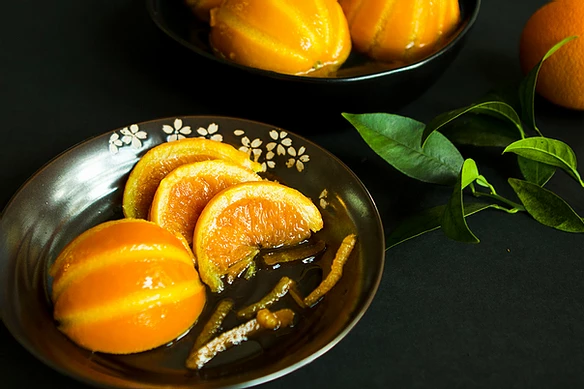
Basically, this recipe takes all the “bitter” out of the peels, by curing them in a simple sugar syrup. It isn’t a difficult recipe, but you need time…time to boil the oranges, and steep them in the syrup, and then cure them at least overnight. The result is a stunningly beautiful dessert that’s refreshing, sweet, and simple. It’s the perfect way to end a meal! Dad, this one’s for you!
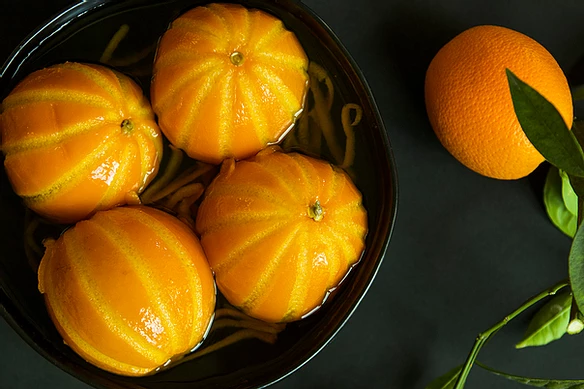
Share Your Thoughts...
Cold Candied Oranges
Makes: 6 candied oranges
Prep Time: 10 minutes
Bake Time: 1 hour & 20 minutes
Total Time: 1 hour & 30 minutes plus curing and chilling time
Ingredients
- 6 firm, juicy, seedless oranges with thin skins (recently I’ve been using Cara Cara oranges), no bigger than a baseball
- 6 cups granulated sugar
Instructions
Bring a stainless-steel pot of water to a boil. (It should be large enough to hold the oranges submerged.)
Wash and dry the oranges, and channel from stem to navel at 1/2-inch intervals, removing strips of peel while leaving the pith intact, until the oranges resemble those onion domes on Russian churches. (You need a good, sharp channeler, not a tiny-toothed zester for this one.)
Place the oranges and their long, fat threads of channeled peel into the boiling water, and reduce to a simmer. Cover the oranges with a lid one size too small for the pot, to keep them submerged. Let them blanch for about 25 minutes to remove the harshest edge of their bitter nature. They should swell and soften but not collapse or split.
Remove the oranges and zest from the simmering water with a slotted spoon, and set aside. Dump out the blanching water, and return the dry pot to the stove.
In that same pot, combine the sugar with 6 cups water; bring the sugar water to a boil over medium-high, stirring until the sugar has dissolved, then allow to gently boil, and reduce for 10 minutes, uncovered. You want some water to evaporate and for the syrup to take on a little body.
Carefully place blanched oranges and zest into the sugar syrup, and reduce heat to a very slow, lethargic simmer. Cover oranges with a parchment circle cut slightly larger than the circumference of the pot (by 1 inch is enough), then place the too-small lid on top of the parchment on top of the oranges, to keep them fully submerged (and sealed under the parchment) in the sluggishly simmering syrup.
Cook the oranges in the syrup for about 45 minutes, checking on them frequently to keep the temperature quite slow and stable, until they take on a high gloss and appear vaguely translucent and jewel-like.
Cool oranges and peels in their syrup for a full 24 hours before serving. This kind of “cures” them. They get even better after 48 hours. First, you’ll want to let them cool at room temperature until no longer warm to the touch, at least 4 hours, then refrigerate them until thoroughly chilled. The oranges last refrigerated for 1 month as long as they are submerged in that syrup.
Serve very cold. Eat the whole thing, skin and all, with a knife and fork. It’s like a half glacéed fruit and half fresh fruit — refreshing, tonic, digestive and so great after dinner.
Ingredients
You May Also Like
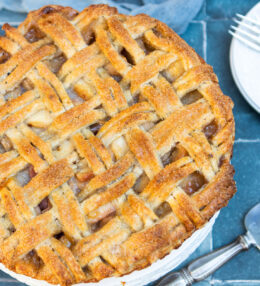


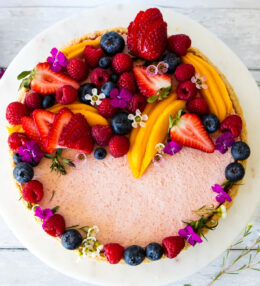

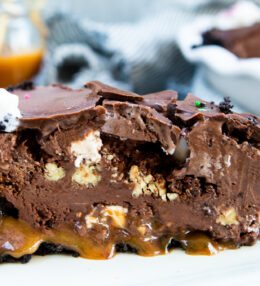
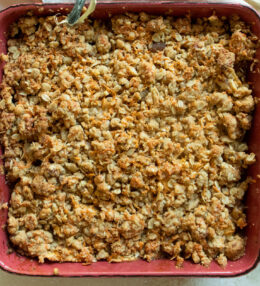


 Perfect for Game Day, this Sweet an
Perfect for Game Day, this Sweet an

 Grilled Honey Mustard Chicken with Peach
Grilled Honey Mustard Chicken with Peach 
 This gorgeous Lemon Cream Cheese Cake is ever
This gorgeous Lemon Cream Cheese Cake is ever


 These slightly charred Soy Sauce Pan-Fried No
These slightly charred Soy Sauce Pan-Fried No



 This No-Bake Blueberry Pie is the ideal c
This No-Bake Blueberry Pie is the ideal c

 Appetizers should be easy and delicious
Appetizers should be easy and delicious 
Recipe Reviews